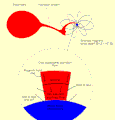Bestand:Magnetic cv.gif
Magnetic_cv.gif (432 × 449 pixels, bestandsgrootte: 13 kB, MIME-type: image/gif)
Bestandsgeschiedenis
Klik op een datum/tijd om het bestand te zien zoals het destijds was.
| Datum/tijd | Miniatuur | Afmetingen | Gebruiker | Opmerking | |
|---|---|---|---|---|---|
| huidige versie | 16 mrt 2018 22:39 |  | 432 × 449 (13 kB) | Lithopsian | User created page with UploadWizard |
Bestandsgebruik
Dit bestand wordt op de volgende pagina gebruikt:
Globaal bestandsgebruik
De volgende andere wiki's gebruiken dit bestand:
- Gebruikt op en.wikipedia.org



